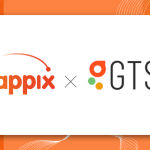Zappix, a smartphoneVisual IVR softwareinnovator, has announced an expanded visual IVR authoring tool with integrated Voice IVR and Visual IVR scripting and functionality in a single system. The new authoring tool provides the ability to develop and configure full cloud IVR and Mobile Visual IVR, and to write once and deploy on multiple platforms, not only on various Voice cloud IVR providers but also on multiple Mobile platforms including HTML5, Android, and iOS simultaneously.
The new Visual IVR authoring tool is expanded to allow support for Plivo Voice XML and Twilio TwiML voice authoring language. Zappix voice authoring tool already supports VXML 1.0 and 2.0. With this new release, Zappix clients have support for dynamic templates and external APIs used to customize voice prompts to improve customer experience. Each voice XML can be further customized by high-level JS scripting available at each menu node.
It is now easy to build a complex customer self-service visual IVR backed by the voice IVR of your choice. With Zappix drag and drop UI support, it’s easy to build, modify and even switch between different providers while keeping all existing work intact.
The ZappixVisual IVR product suiteproves its effectiveness in rerouting voice calls to digital and self-service channels, shortening the time for call resolution and providing the customer a wide variety of digital Omni channels.
“I’m excited by the tremendous new capability to author a Voice and Visual IVR from the same tool,” said Avner Schneur President and CEO of Zappix. “The Zappix smartphone Visual IVR suite became much more powerful with that addition. It now provides companies the ability to build a very strong ICloud VR solution together with the Visual IVR self-service and omnichannel access – such as telephony (phone calls), mobile forms, videos, images, PDFs, email, text messaging (SMS), web and social media,” added Schneur. “And, the Zappix suite tracks all interactions on the platform; giving the companies valuable data on their customers’ interactions with the voice channel, social media or self-service options, thereby allowing analysis of cross-channel consumer behavior, trend identification and consumer satisfaction measurement.”
The Zappix Visual IVR system offers a better call experience for customers in multiple verticals with a visual representation of an Interactive Voice Response (IVR) call menu on a smartphone or computer screen to offer customers visual self-service. The new IVR and Visual IVR authoring platform from Zappix allows contact centers to offer consumers better ways to interact with customer service compared to the old voice menus. Customers from any vertical can use existing Visual IVR templates to build and launch a contact center solution in a short time frame.
Furthermore, as a business evolves and requirements change, service providers can rapidly adjust their Visual IVR offering in a matter of hours; utilizing the powerful authoring platform.
The Zappix platform improves the customer experience by allowing consumers to visually navigate the phone menu support options, and then easily select options by touch versus listening to a list of options over the phone and interacting with their voice. A contact center call made via Zappix is usually much shorter than one made via a traditional voice IVR, is easier to use and can offer many options that are not available during a standard voice call, such as filling a form or watching a video.
Zappix transforms the consumer experience by providing a smartphone visual and self-service option that works as a native iPhone or Android App as well as an HTML 5 web app.





